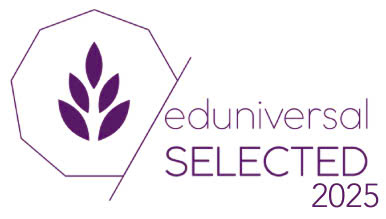- Eduniversal
-
-
Business Schools Ranking
-
Africa
- Algeria
- Angola
- Benin
- Cabo Verde
- Cameroon
- Congo
- Djibouti
- Egypt
- Eswatini
- Ethiopia
- Gabon
- Ghana
- Ivory Coast
- Kenya
- Lesotho
- Madagascar
- Malawi
- Mali
- Mauritania
- Mauritius
- Morocco
- Mozambique
- Namibia
- Nigeria
- RDC
- Rwanda
- Senegal
- Sierra Leone
- Somalia
- South Africa
- Sudan
- Tanzania
- Togo
- Tunisia
- Uganda
- Zambia
- Zimbabwe
- Central & Eastern Europe
- Central Asia
- Eurasia & Middle East
- Far East Asia
- Latin America
- North America
- Oceania
- Western Europe
-
Africa
- Schools of Excellence by field
- Awards
- News
- Contact
Summary:
Latin American business schools are adapting to a shifting educational and economic context. This article explores key trends, challenges, and innovation opportunities shaping their future in 2025 and beyond.
Economic and Educational Landscape in Latin America
Business schools across Latin America are navigating a unique landscape shaped by slow GDP growth, technological transformation, and evolving educational demands. Forecasts place the region’s GDP growth at 2.5% in 2025, underscoring cautious optimism post pandemic recovery.
Government-sponsored digitization, such as increased investment in AI-powered education tools and remote learning, fosters the development of hybrid learning models now integral to higher education across Latin America.
These institutions are positioned as critical engines of workforce development, expanding their influence in key economic sectors. Their strategic emphasis on leadership, digital innovation, and entrepreneurship is key to addressing current market demands, especially in countries like Mexico and Colombia, which offer a growing ecosystem of business education.
Major Trends Reshaping Business Education
1. Digital Transformation and AI Integration
Digitalization continues to redefine how business education is offered. The integration of AI into curricula introduces new certificate programs that blend business fundamentals with technological competencies. These combine real-time analytics, AI decision-making models, and immersive tools like VR/AR to deliver experiential learning, although unequal infrastructure remains an implementation challenge.
EdTech adoption is particularly impactful in countries showing rising tech infrastructure, such as Brazil. These changes address mid-career learners’ thirst for skill renewal in response to digital disruption across industries.
2. Regionalized Globalization Strategies
While global recognition remains relevant, many Latin American business schools pivot towards regional distinctiveness to overcome limitations of international competition. Accreditation and global partnerships are selectively pursued, often affected by foreign-exchange fluctuations and international student mobility constraints.
Instead of relying solely on ranking metrics, these schools align their offerings with local industries and cultural sensibilities. Institutions in Argentina and Chile are examples of how regional strategies drive meaningful differentiation amid global flux.
3. Evolving Specializations and Curricular Shifts
Sustainability and social responsibility have moved from electives to core structural elements in business programs. This growing focus reflects the region’s deeper socio-economic integration of these issues when compared to developed markets. Localized case studies, community-based projects, and academic-corporate collaborations tie business education more closely to real-world impact.
Latin American schools leverage employer engagement and applied research to develop specializations in digital resilience, ethical leadership, and environmental stewardship, which are particularly beneficial to graduates operating across high-risk, high-reward economies.
Changing Expectations of Learners
Modern learners in Latin America seek diverse, flexible, and technology-enabled educational experiences. Hybrid programs accommodating work-life balance, self-paced online learning, and modular curriculum structures lead the way.
Key to this transformation is the emphasis on integrating soft and technical skills, fostering leadership agility, creative problem solving, and entrepreneurial thinking.
Countries like Peru and Ecuador are seeing increased demand for such adaptive programs among young professionals and entrepreneurs aiming to enter or disrupt fast-evolving sectors.
Corporate Collaboration and Industry Relevance
Stronger engagement between business schools and the private sector is reshaping curricula. These collaborations create dynamic, demand-driven programs while ensuring students gain practical exposure. Co-designed curricula, corporate mentoring, and innovation incubators foster startup culture and prepare students for the regional job market’s realities.
This trend is especially strong in countries strengthening public-private ties and experiential learning systems. For instance, schools in Dominican Republic are investing in internships and applied research projects that enhance employability while supporting local innovation.
Ongoing Challenges for Business Schools
1. Budget Constraints and Infrastructure Limitations
Financial sustainability is a growing concern as public education budgets shrink, necessitating alternative funding strategies. Private partnerships and digital scale-ups help bridge the gap but cannot completely offset the high cost of AI and digital infrastructure.
2. Faculty and Talent Development
With international demand for academic talent outpacing supply, attracting top faculty remains a strategic hurdle. Demographic shifts and migration patterns also reduce the available student pool, particularly outside of major urban centers, compounding the talent pipeline problem.
3. Keeping Pace with Technological Innovation
Despite the enthusiasm around digital teaching formats and analytics, execution varies widely based on regional disparities in broadband and hardware access. While metropolitan hubs may pilot AI-led learning, rural campuses may lag significantly behind.
4. Adapting to a Hybrid Job Market
Employers expect graduates with robust digital fluency, data interpretation skills, and a new entrepreneurial mindset—areas where many traditional curricula still lag. Programs must remain agile, frequently updating content and delivery mechanisms to reflect real-time market shifts.
5. Geopolitical Tensions and Instability
Frequent policy changes, regulatory uncertainty, and geopolitical fragmentation hinder long-term institutional planning. This volatility directly influences foreign partnerships, rankings visibility, and institutional growth strategies in nations such as Venezuela.
Strategic Opportunities for Innovation
1. Embracing AI & EdTech Ecosystems
Latin America is uniquely positioned to leapfrog some traditional models through partnerships with EdTech innovators. Personalized learning powered by AI increases student engagement, while cloud-based platforms reduce location barriers. Developing strategic alliances with startups and governmental agencies accelerates equitable access to cutting-edge curriculum models.
2. Executive and Lifelong Learning Programs
Business schools are expanding upskilling opportunities for mid-career professionals across industries disrupted by digital transformation. Hybrid learning models offer accessibility and can support rapid labor market reallocation.
Paraguay and neighboring regions are creating tailored executive education models that respond to localized industry needs, especially in agribusiness and fintech.
3. Sustainable Development as a Competitive Edge
Latin American institutions have a head start in embedding social equity and environmental consciousness into business curriculum. These focus areas meet both market and regulatory shifts—positioning schools as thought leaders on ethical business practices where local governance or infrastructure demand high-impact innovation.
4. Regional and Global Partnership Models
Institutions are investing in regional alliances that balance global exposure with local adaptability. Agreements with corporations, NGOs, and multilateral organizations increase resiliency and open up new funding pathways—even amidst economic fluctuations.
5. Amplifying Global Reach Through Local Strengths
Latin American business schools are redefining what internationalization means by focusing on regionalization. Alongside creating programs aligned with local needs, they are formulating strategic alliances with institutions abroad that emphasize mutual exchange rather than one-way adoption of global models.
Examples can be seen in collaborative initiatives between institutions in Uruguay and European schools to co-design sustainability-focused entrepreneurship accelerators.
Business Schools Ranking in Uruguay
|
3 Palmes of Excellence Excellent Business Schools with reinforcing international influence |
Rank Position in
Palmes’ League |
Deans’ Recommendation
rate 2025 |
|---|---|---|
|
Universidad Católica Del Uruguay Facultad De Ciencias Empresariales |
1 | 154 ‰ |
|
2 Palmes of Excellence Good Business Schools with strong regional influence |
Rank Position in
Palmes’ League |
Deans’ Recommendation
rate 2025 |
|---|---|---|
|
Universidad Ort Facultad De Administración Y Ciencias Sociales |
1 | 49 ‰ |
The Eduniversal Selected Schools list aims to highlight institutions by country are not yet eligible for a Palmes of Excellence League entry but are on a positive path toward achieving it.
The schools on the Eduniversal Selected list have been recognized by Eduniversal for their innovative projects, disruptive energy, and growing potential.
The schools on the Eduniversal Selected list have been recognized by Eduniversal for their innovative projects, disruptive energy, and growing potential.
Faculty of Business Studies- Universidad de la Empresa
IEEM Business School- Universidad de Montevideo
Universidad de la República Facultad de Ciencias Económicas y de Administración
For a complete overview of master’s programs in Uruguay, visit our website.
You’ll find updated rankings, detailed program profiles, and exclusive advice to help you choose the right path for your career.
You’ll find updated rankings, detailed program profiles, and exclusive advice to help you choose the right path for your career.






